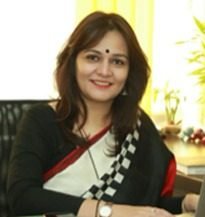Who is Nelson Mandela
Throughout history, many people around the world have encountered discrimination, in which they are viewed differently due to their ethnicity, skin colour, gender, age, and a variety of other characteristics.
Unfortunately, this continues today! However, some incredible people work tirelessly to make a positive difference and contribute to a world in which everyone receives treatment fairly and equitably. Nelson Mandela is one such guy.
Early Life
On July 18, 1918, Rolihlahla Mandela was initiated into the Madiba family in the town of Mvezo, Eastern Cape. When Rolihlahla was twelve years old, his father died, and he ended up being Jongintaba’s ward in the Great Place in Mqhekezweni.
Hearing the elders’ stories about his ancestors’ bravery throughout the resistance wars, he wished to contribute to his people’s freedom struggle as well.
He attended primary school in Qunu, where his educator, Miss Mdingane, gave him the name Nelson, following the tradition of giving all kids “Christian” names.
He earned his Junior Certificate at Clarkebury Boarding Institute before enrolling at Healdtown, a reputable Wesleyan secondary school.
Mandela started studying for a Bachelor of Arts degree at the University College of Fort Hare, but he was dismissed for participating in a student protest.
Political Activism
While Mandela became increasingly politically involved beginning in 1942, he did not join the African National Congress until 1944, when he helped to organize the ANC Youth League (ANCYL).
In 1944, he married Evelyn Mase, a nurse and cousin of Walter Sisulu. They had two boys, Madiba Thembekile “Thembi” and Makgatho, and two daughters named Makaziwe, the first of whom died in infancy. They divorced in 1958.
Mandela climbed through the ranks of the ANCYL, which helped the ANC adopt an even more extreme mass-based program, the Programme of Action, in 1949.
In 1952, he was appointed the National Volunteer-in-Chief of the Defiance Campaign, with Maulvi Cachalia serving as his deputy. This civil disobedience campaign against six unfair laws was a combined effort by the ANC and the South African Indian Congress. He and 19 other people were indicted under the Suppression of Communism Act for their involvement in the campaign and sentenced to a period of hard labour, deferred for two years.
Mandela was able to practice law after completing a two-year law diploma in addition to his BA. In August 1952, he and Oliver Tambo founded Mandela & Tambo, South Africa’s first black-owned law business in the 1950s.
Incarceration
Mandela was imprisoned on Robben Island, off the coast of Cape Town, between 1964 and 1982. He was then detained in Pollsmoor Maximum Security Prison until 1988 when he was relocated to Victor Verster Prison near Paarl after being treated for TB. The South African government extended restricted offers of freedom to Mandela on several occasions, especially in 1976, on the condition that he acknowledge the Transkei Bantustan’s newly independent—and highly controversial—status and agree to live there. An offer offered in 1985 required him to give up the use of force. Mandela declined both proposals, the second on the grounds that only free men could engage in such conversations, and as a prisoner, he wasn’t free.
Throughout his time in prison, Mandela maintained widespread popularity among South Africa’s Black population, and his confinement became a cause célèbre in the worldwide community, which criticized apartheid. As South Africa’s political situation worsened after 1983, particularly after 1988, ministers from President P.W. Botha’s cabinet engaged him in exploratory conversations; in December 1989, he met with Botha’s successor, de Klerk.
Release and Political Leadership
On February 11, 1990, the South African government, led by President de Klerk, released Mandela from prison. Shortly after his release, Mandela was appointed deputy president of the ANC; he took over as president in July 1991. Mandela spearheaded the ANC’s discussions with de Klerk to end apartheid and facilitate an orderly transition to nonracial democracy in South Africa.
The Mandela-led ANC won South Africa’s first universal suffrage elections in April 1994, and Mandela was sworn in as the nation’s first multiethnic president on May 10. He established the Truth and Reconciliation Commission (TRC) in 1995 to examine human rights violations committed during apartheid and implemented educational, housing, and economic growth measures to better the living conditions of the country’s Black population.
Presidency and Achievements
In 1996, he managed the adoption of a new democratic constitution. In December 1997, Mandela resigned from the ANC, ceding leadership to his handpicked successor, Thabo Mbeki. Mandela and Madikizela-Mandela separated in 1996, and in 1998, he married Graca Machel, the widow of Samora Machel, a former Mozambican president and Frelimo leader.
Mandela declined to run for a second term as South African president and was taken over by Thabo Mbeki in 1999. After leaving the government, Mandela retreated from active politics but kept a prominent international presence as an advocate for peacemaking and social justice, often through the activities of the Nelson Mandela Foundation, which was founded in 1999. He was an early leader of the Elders, an organization of international leaders formed in 2007 to promote conflict mediation and problem-solving around the world. In honour of Mandela’s 90th birthday in 2008, many festivities were held in South Africa, the United Kingdom, and other nations.
Later Life and Legacy
Mandela Day, celebrated on Mandela’s birthday, was established to honour his legacy by encouraging community service worldwide. It first took place on July 18, 2009, and was primarily sponsored by the Nelson Mandela Foundation and the 46664 responsibility (the foundation’s global HIV/AIDS awareness and prevention campaign); later that year, the United Nations announced it as Nelson Mandela International Day.
Conclusion
By the time he died, Mandela was universally regarded as both “the father of the nation” and “the founding father of democracy” in South Africa. He was a “global icon” outside of South Africa, according to South African studies researcher Rita Barnard, who described him as “one of the most admired individuals of our time”. He is frequently mentioned alongside the late Mahatma Gandhi and Martin Luther King Jr. as one of the twentieth century’s most prominent anti-racist and anti-colonial figures.
Mandela rose to international prominence during his time in prison in the 1980s, when he emerged as the world’s most renowned political prisoner, an emblem of the anti-apartheid struggle, and an inspiration for millions who believed in the goal of human equality.
Mandela’s presidency was largely regarded as “a golden age of hope and harmony” within a decade of its conclusion, with great nostalgia voiced. His name was frequently cited by people who criticized his successors, such as Mbeki and Zuma. Mandela received international renown for his advocacy in ending apartheid and promoting racial healing, becoming known as “a moral authority” with a vital “concern for truth.” Mandela’s iconic position has been criticized for obscuring the nuances of his life.
FAQs
Mandela battled apartheid, a white supremacist system in South Africa. Apartheid classified everyone into one of four racial categories: “white/European,” “black,” “coloured,” or “Indian/Asian.” Non-white South Africans were considered second-class citizens with limited political authority.
Nelson Mandela is most known for successfully spearheading the fight against South Africa’s apartheid policies in the twentieth century, during which he was tragically detained at Robben Island Prison.
Evelyn Ntoko Mase, later known as Evelyn Rakeepile, was the first wife of South African anti-apartheid campaigner and future president Nelson Mandela, to whom she was married from 1944 until 1958. Mase was a professional nurse.


